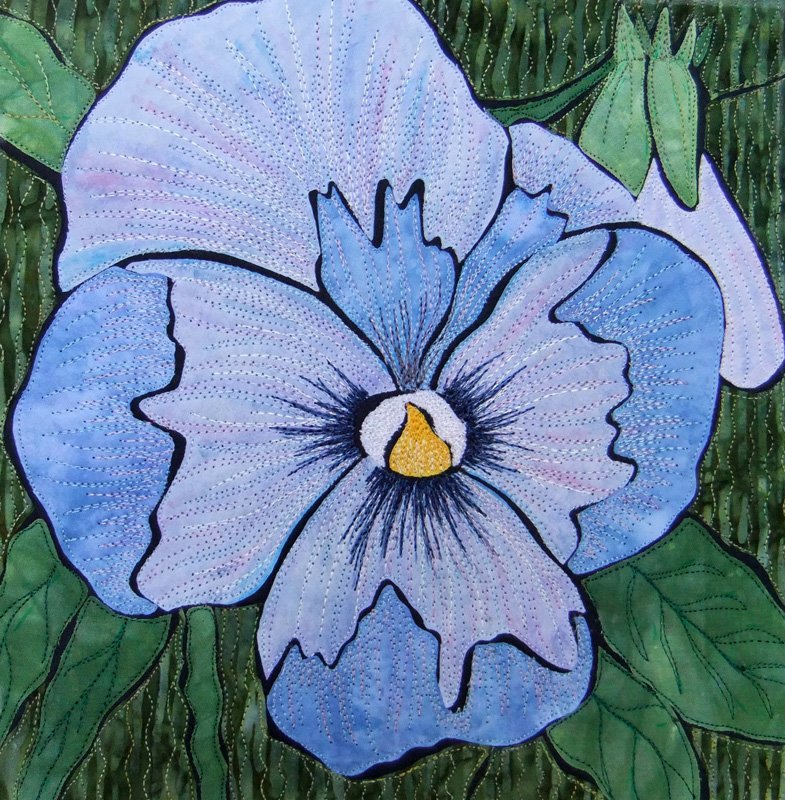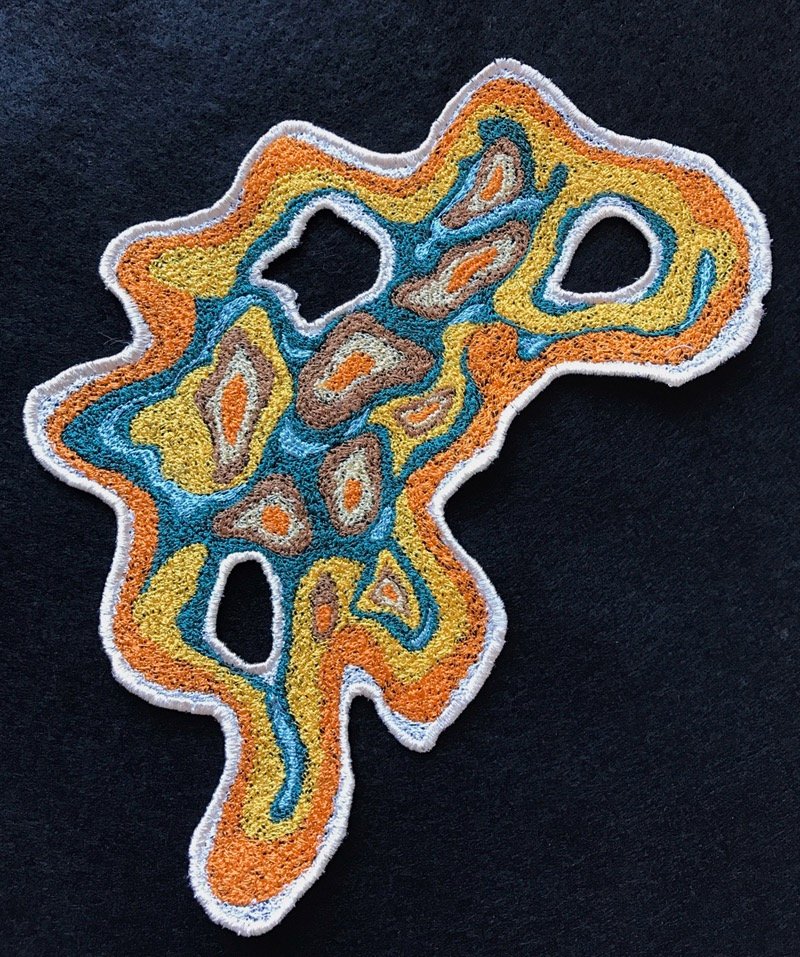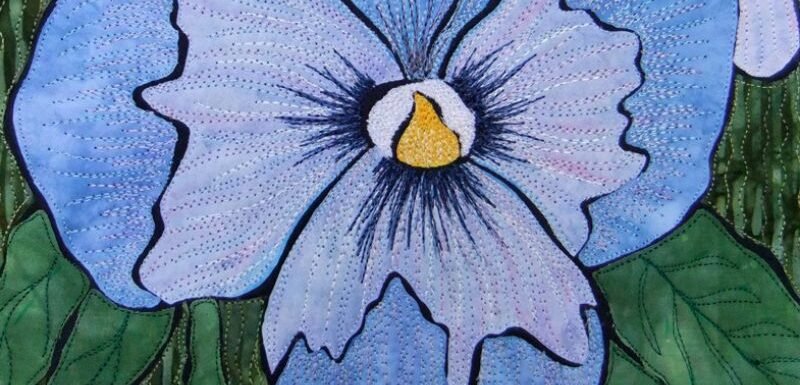Are you someone who thinks thread painting by machine is hard? While it may look complicated, it is remarkably simple. So, in this article, I’ll debunk the myth that thread painting is hard and offer some tips so that you can move forward.
Affiliate Disclosure: Some of the links on this site are affiliate links. This means I may receive a small commission (at no further expense to you) if you click through and make a purchase. ThreadSketchingInAction.com is a participant in the Amazon Services LLC Associates Program, an affiliate advertising program designed to provide a means for sites to earn commission fees by advertising and linking to Amazon.com.
5 Reasons Why You Think Thread Painting Is Hard
For those unfamiliar with the art, thread painting by machine can seem daunting. It’s so easy to look at other people’s work (i.e. people who’ve been doing it for years) and think, “I could never do that.”
But, just like any other craft, thread painting is a journey of learning and practice.
Thread Painting Isn’t Hard — we just ‘think’ it is!
As creative people, we are often our own worst enemy. What’s going on between your ears can stop you in your tracks.
Where did that creativity go?
Has it been banished to the ‘mission impossible’ realm — just because of what you’re thinking?
If you identify with any of the following, you’re not alone (and you’re in the right place):
1. The Fear of the Unknown
Most people fear what they don’t understand. It’s natural to be intimidated when you see an expert at work, effortlessly creating masterpieces.
But remember, they, too, started from scratch. Every skilled artist began with the basics, made mistakes, learned, and grew.
With patience and practice, you can too!
I’ll let you into a little secret…when I started my own exhilarating journey into the world of thread sketching and thread painting, I didn’t even really understand what it was!
I stumbled upon the concept quite by chance. And, over time, explored and experimented until I found my ‘happy place’.
2. Perfectionism
The desire to create the “perfect” piece right off the bat can be overwhelming. But perfection isn’t the goal when starting – it’s about learning and enjoying the process.
Embrace your mistakes, as they’ll be your most valuable teachers.
In fact, some of the most exciting pieces of textile art are often the result of ‘mistakes’ — which I prefer to call ‘happy accidents’!
3. Overthinking the Equipment
It’s easy to believe that you need the most advanced sewing machine or the most expensive threads to start thread painting.
But the truth is, you can start with basic equipment. It’s more about technique and practice than having the fanciest tools.
Essential Equipment for Thread Painting:
A home sewing machine
All that’s required is a home sewing machine that can have an open-toe freemotion presser foot fitted and be able to drop (lower) the feed dogs. Most modern domestic sewing machines include these features.
You may need to buy the open-toe foot because not all machines have one included. However, open-toe freemotion presser feet are inexpensive and easy to source for any brand of home sewing machine.
Several brands (and types) of free motion presser feet are available — from generic brands that suit most machines, to brands specifically made for your machine.
Fabric
I suggest using 100% cotton quilting fabric with a firm weave (high thread count). Good quality quilting cotton and batiks make a good choice.
Stabiliser
If you are not going to use an embroidery hoop, you’ll need a very firm stabiliser, such as Pellon Peltex Ultra-Firm Stabiliser or Buckram (e.g. Vilene Fusible Buckram).
My book, Complete Guide to Stabilising, may be a useful asset in your library.
If you prefer a hoop, you can get by with a mid-weight (or even lighter) stabiliser.
Remember that, with thread painting, removing the stabiliser from your work is usually impossible once it’s stitched.
Thread
Any good quality machine embroidery thread is suitable for thread painting. However, most people begin with 40-gauge rayon or polyester machine embroidery thread.
Any good quality machine embroidery thread is suitable for thread painting. However, most people begin with 40-gauge rayon or polyester machine embroidery thread. Using poor quality thread (or very old thread) is not recommended as it can lead to disappointing results.
General Sewing Supplies
Scissors and a rotary cutter, a self-healing cutting mat, pins, fabric markers, and so on.
You’ll also need appropriate needles: I prefer to use Machine Embroidery Needles, but you can also try Quilting or Universal needles, if you prefer.
The most convenient size range is: 75/11 – 90/14 for most work.
4. Comparing Yourself to Others
Ah! Comparing your work to that of seasoned artists can be disheartening. We all do it!
But remember, every artist has their unique style and journey.
Focus on your growth and the joy the process brings, rather than trying to measure up to someone else.
And to add my two cents worth — it’s OK to be inspired by other people, but don’t try to copy them.
Your work should represent your style and ideas. You are ‘you’ and not ‘them’, if you get my drift. Embrace your artistic flair.
5. Fear of Wasting Materials
It’s natural to worry about ‘ruining’ fabrics or threads when starting. However, experimentation is at the heart of every art form.
Through trial and error, you’ll discover techniques and styles that resonate with you.
How to move past these apprehensions
Start Small
Begin with simple designs and patterns. As you gain confidence, you can tackle more complex projects.
Begin with something simple:

Blue Pansy
This is a small appliqué art quilt with simple free motion straight stitch embellishment.
I made this very early in my thread sketching journey:
- Create a simple fused appliqué design.
- Create a quilt sandwich.
- Enhance with free motion straight stitch.
Try being more experimental:

Abstract design inspired by moss
This experimental abstract design is inspired by the colour and form of natural moss.
It’s worked on black felt fabric (with firm stabiliser).
Stitched using tiny free motion zigzag stitch.
The beauty of working an experimental design is that you don’t need to worry about following an outline or perfecting your technique.
I think it’s one of the best ways to get comfortable with free motion zigzag stitching.
Practice Regularly
Just like any skill, the more you practice, the better you get. Set aside dedicated time to hone your craft.
Celebrate Every Achievement
Be it completing a small project or mastering a new technique, celebrate every milestone.
Remember, every thread painting artist was once a beginner, feeling the same apprehension you might be experiencing now.
The journey from uncertainty to artistry is filled with lessons, joys, and personal growth. So, pick up that needle, thread your machine, and embark on your exhilarating thread painting adventure!
Related Posts
- What kind of needle should you use for thread painting?
- How to Choose the Best Machine Embroidery Thread
- Thread Sketching: What Exactly Is It?
- How to Prepare Your Fabric for Thread Sketching (it’s what’s underneath that matters)
- Online Classes in Thread Sketching and Thread Painting











